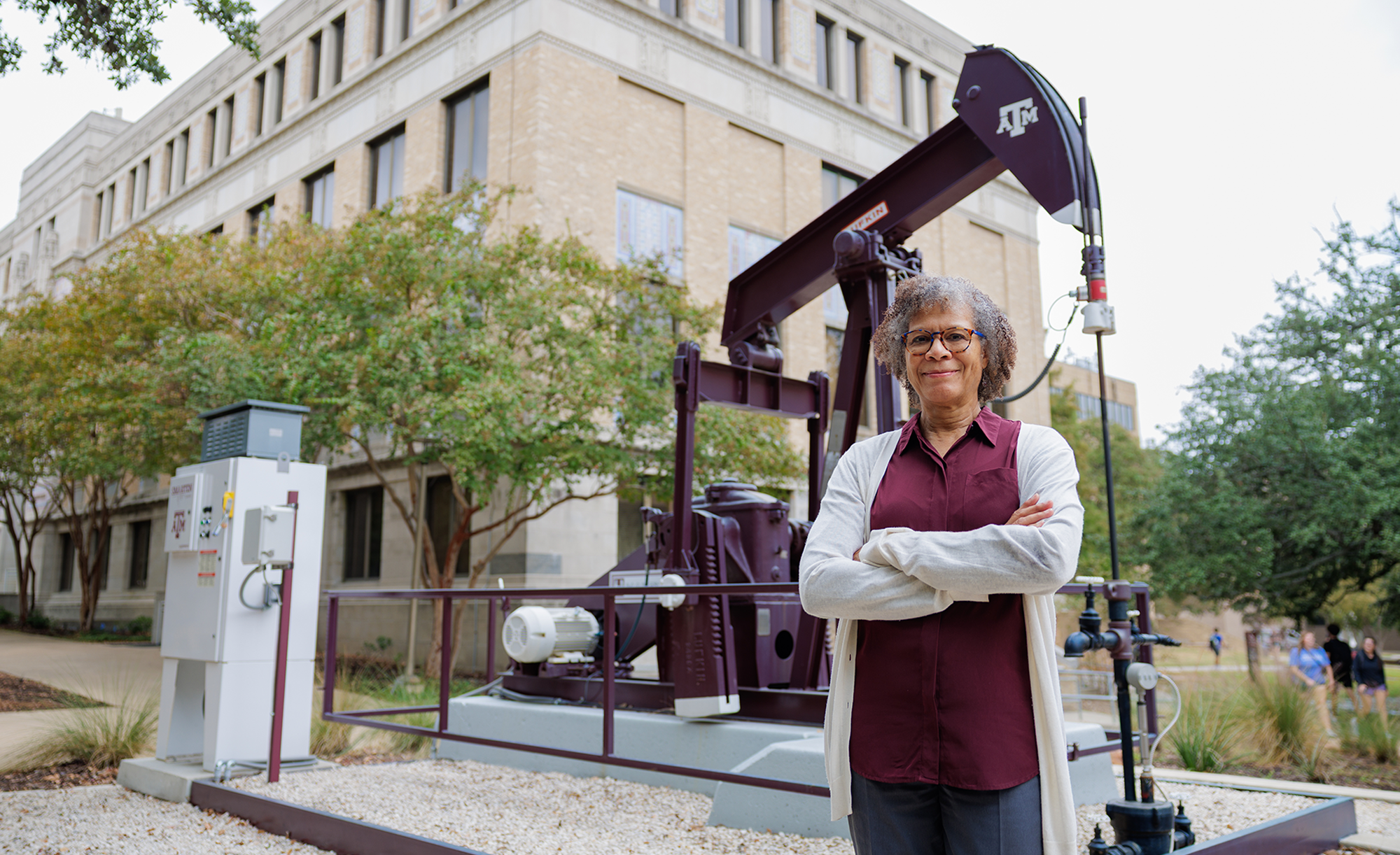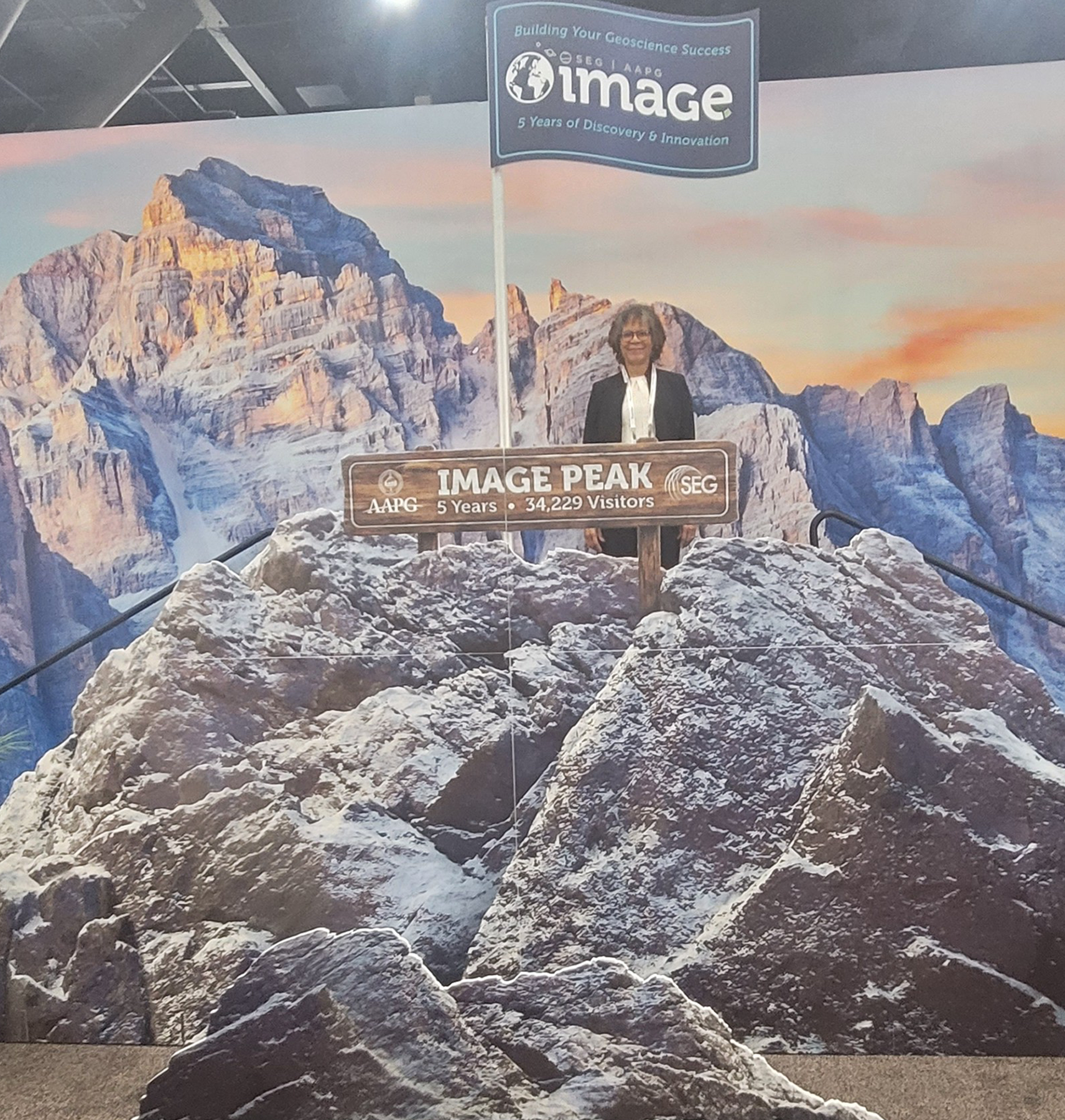
When people think of the oil and gas industry, they often picture rigs, pipelines and refineries—not classrooms, laboratories and student competitions. But at Texas A&M University, the Berg-Hughes Center for Petroleum and Sedimentary Systems is quietly shaping the future of the energy industry. Its faculty and students are tackling some of the most complex challenges in petroleum studies and preparing for a changing energy landscape, all while training the next generation of energy leaders.
Housed in the Department of Geology & Geophysics within Texas A&M’s College of Arts & Sciences, the Berg-Hughes Center was founded in 2009 to ensure the university remained at the forefront of petroleum studies. Named in honor of world-renowned petroleum expert and distinguished professor Dr. Robert Berg and the Hughes family — Dan A. Hughes and Dudley Hughes ’51, and Dan A. Hughes Jr. ’80 — the center was launched with their generous support and strong industry backing. Today, it serves as a hub that connects geoscientists, engineers and industry leaders, advancing both education and research across energy related disciplines.
“The Berg-Hughes Center prepares students to tackle real-world challenges in energy production,” Dr. Sherilyn Williams-Stroud, director of the center, professor in the Department of Geology & Geophysics, and holder of the Dan A. Hughes ’51 Chair in Geosciences, said. “Fossil fuels will remain in the energy mix for decades, but we’re also expanding our focus to include geothermal and nuclear. Solar and wind are indirectly the mix because of their relationship to critical minerals. All energy sources rely on geologic resources, and students are encouraged to think about the entire energy system.”
The Berg-Hughes Center provides an invaluable advantage for Aggie students. It has a strong impact on preparing students for energy-related careers by offering industry partnerships and hands-on learning opportunities. These experiences help students develop skills that make them stand out in a competitive job market.
Industry Connections that Build Careers
The Berg-Hughes Center works closely with energy industry leaders to give students real-world experience. For example, Chevron funds the Center of Research Excellence (CoRE), where researchers focus on understanding petroleum systems and how sedimentary basins form. Another industry-funded group, the Unconventional Resources Consortium led by Dr. Art Donovan in the A&M Geology & Geophysics Department, lets students dig into shale plays like Texas’s Eagle Ford — a major oil and gas formation stretching across South Texas and one of the biggest energy sources in North America.
“Students graduate with real-world skills,” Williams-Stroud said. “They analyze data, work in teams and connect with professionals who will one day be their colleagues.”
Many students go on to successful careers in the energy industry, taking leadership roles in major companies and contributing to important research. A standout opportunity for students is the American Association of Petroleum Geologists (AAPG) Imperial Barrel Award Program, an annual global competition where teams analyze real subsurface data for petroleum, geothermal or carbon capture projects using cutting-edge technology. A Texas A&M team mentored by Berg-Hughes Center faculty recently won first place in the Gulf Coast Region, competing against top universities, and went on to place third internationally out of 57 teams worldwide. This achievement not only highlights the high level of training students receive but also boosts interest and enrollment in petroleum geoscience programs.
Preparing for the Energy Transition
While petroleum studies remain a core focus, the center is also looking to the future. Faculty and students are working on research in carbon capture, hydrogen storage, thermal storage and geothermal energy.
“The future of energy isn’t about one source over another,” Dr. Julie Newman, head of the Department of Geology & Geophysics, said. “Graduates need to understand how oil, gas, renewables, and new technologies all fit together. That’s what we teach here.”
New breakthroughs in geothermal drilling have already lowered costs and made the technology more viable by greatly reducing drilling times into hard, hot rocks—a major expense for engineered geothermal systems (EGS). This advancement could make geothermal energy more affordable and widely available. Students are also studying how injecting microbes into coal deposits can increase methane production, offering a way for coal-reliant communities to shift toward cleaner natural gas. Another example of innovative energy research in geoscience is exploring how microbes interact with hydrogen stored underground, which is key to developing a future hydrogen economy. These breakthroughs highlight the center’s focus on innovative energy solutions that bridge traditional and renewable resources.
Looking Ahead

Over the next five years, the Berg-Hughes Center plans to broaden its mission to cover all aspects of energy-related geoscience, reflecting the evolving needs of the energy sector.
One of the most significant upcoming initiatives is the launch of the Industry-University Cooperative Research Center (IUCRC) for Energy-Related Geologic Storage (ERGS). This partnership between Texas A&M and Oklahoma State University, supported by the National Science Foundation (NSF), aims to lead cutting-edge research on geologic storage solutions — such as storing carbon dioxide, methane, and hydrogen underground, and wastewater disposal impacts. These efforts are key to reducing greenhouse gas emissions and enabling a sustainable energy future.
“The IUCRC for ERGS will allow the center to focus on new areas of research and strengthen collaboration with industry,” Williams-Stroud said. “NSF support helps us lay the groundwork, while industry partners provide the funding needed to carry out impactful projects.”
The IUCRC will involve companies from across the energy spectrum — oil and gas, renewables, environmental services, and companies in sectors that use and distribute energy — to guide the center’s priorities. Their involvement will help ensure the research addresses real-world challenges and prepares students with the skills needed for the future energy workforce.
Looking forward, the Berg-Hughes Center envisions a future where geoscientists play a central role in managing and innovating across the entire energy ecosystem — from fossil fuels to renewables to new storage technologies. This integrated approach will prepare students for careers that span traditional and emerging energy fields.
“By connecting all geology-related energy resources under one mission, the Berg-Hughes Center will continue to be a leader in energy research and education for decades to come,” Williams-Stroud said.
How to Support the Berg-Hughes Center
The Berg-Hughes Center for Petroleum and Sedimentary Systems, working with industry leaders, advances research on petroleum and sedimentary basins to benefit Texas, address the nation’s energy needs and educate future leaders.
There are many ways to support this mission. Donor support strengthens student fellowships, research opportunities, lab work, special events and other key priorities that help students and faculty succeed.
“Whether a former student, an energy professional, or someone who simply cares about the future of energy, every gift makes a difference,” Williams-Stroud said. “These investments help train the scientists and engineers who will lead for decades to come.”
To learn more about supporting the Berg-Hughes Center or becoming an industry partner, visit artsci.tamu.edu/giving or contact Chastity Carrigan in the College of Arts & Sciences Development office.
Quick Facts: Berg-Hughes Center for Petroleum and Sedimentary Systems
- Founded: September 2009
- Housed in: Department of Geology & Geophysics, College of Arts & Scienc
- Mission: Advance research and education in petroleum studies by connecting geosciences, engineering, and industry
- Named for: Dr. Robert Berg and the Hughes family (Dan A. Hughes, Dudley Hughes ’51, and Dan A. Hughes Jr. ’80)
- Key Programs:
- Industry-backed research groups (Chevron’s CoRE, Unconventional Resources Consortium)
- Student competitions (Imperial Barrel Award Program, SEG EVOLVE)
- Scholarships, fellowships, and short courses
- Focus Areas: Petroleum systems, unconventional resources, energy transition (geothermal, carbon capture, hydrogen, nuclear, geologic storage)
